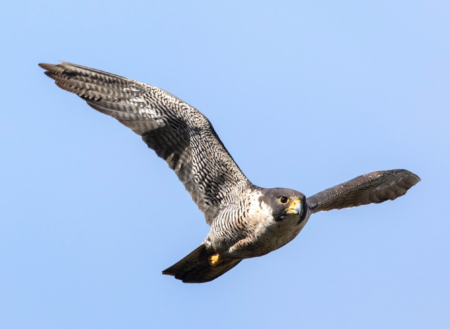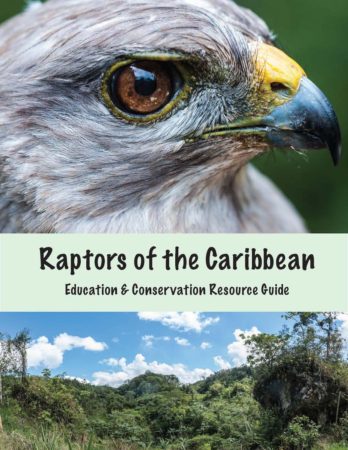
Birds of prey are magnificent, powerful creatures, with a mystique all their own. They play an essential role in Caribbean ecosystems. Sadly, however, their significance as the only native terrestrial predators in the region is often underestimated and misunderstood.
Hispaniola Program Director at The Peregrine Fund, Marta Curti, is one of those conservationists who believe that raptors don’t get the attention they deserve. To inspire others with her own personal passion for the birds, she has written a remarkable new 200-page publication entitled “Raptors of the Caribbean: Education and Conservation Resource Guide.” It is available in Haitian Creole, Spanish and English, and divided into four chapters, each including fun and enlightening educational activities and a learning evaluation. The guide covers identification of raptor species, conservation techniques, and—most importantly—explains “Why Raptors Matter.”

“I believe the completion of this guide is a major milestone for raptor conservation throughout the Caribbean,” says Marta. “I hope this guide will help in fostering passion and compassion for the region’s birds of prey and will inspire students, teachers, biologists, and others to work to conserve these amazing birds.”
After piloting a draft version at the 2022 BirdsCaribbean Conference in Puerto Rico, Marta is now busy conducting in-person teacher training workshops in the Dominican Republic, using the completed guide to expand educators’ knowledge and awareness of the birds.
The workshop includes hands-on, dynamic activities including constructing life-sized hawks using recyclable materials, participating in “raptor Olympics,” a “food chain relay race,” and putting on a play. Marta’s goal is to extend these workshops across the region—while at the same time “training the trainers” to continue teaching students, community members, and educators about the importance of our amazing hawks, falcons, and kites.
Caribbean birds of prey vary greatly in size, behavior, and their preferred habitats. Some are migratory or passage migrants, transiting through the region, such as the Peregrine Falcon itself, which may be becoming more common in urban areas. Another speedy and powerful hawk, the Merlin, also migrates from north to south in the winter. Others such as the American Kestrel and the Red-tailed Hawk are seen more often. While some raptors are quite adaptable to new environments, several endemic species and subspecies are in need of help: for example, the Ridgway’s Hawk, Cuban Kite, Grenada Hook-billed Kite, and Puerto Rican Sharp-shinned Hawk. Climate change, deforestation, hunting, and persecution are among the dangers they face.
Since the printing of the new guide, Marta has completed two training workshops for a total of 39 people, including teachers, field technicians with the Ministry of the Environment, biology students, and women from rural communities who she hopes to involve more in our conservation efforts through a Women’s Conservation Fellowship. One of the best comments we received from participants were: “These activities really show how much we know about the Ridgway’s Hawk,” and “I am so surprised about how much we have learned in just two days.” Another great comment was short and sweet, “I haven’t laughed this hard in a long time as I have during this workshop.”
If you’re interested in learning more about the workshops and/or how to access a copy of the Raptor Education Guide, please contact: Marta Curti
BirdsCaribbean is proud to support this groundbreaking initiative, through the Betty Petersen Conservation Fund; along with the VanTienhoven Foundation, ACSEH, and National Aviary and partners in the Dominican Republic: Fundación Propagas, Fundación Grupo Puntacana, the Dominican Republic Ministry of the Environment and Natural Resources, and ZOODOM (National Zoo of Santo Domingo).






